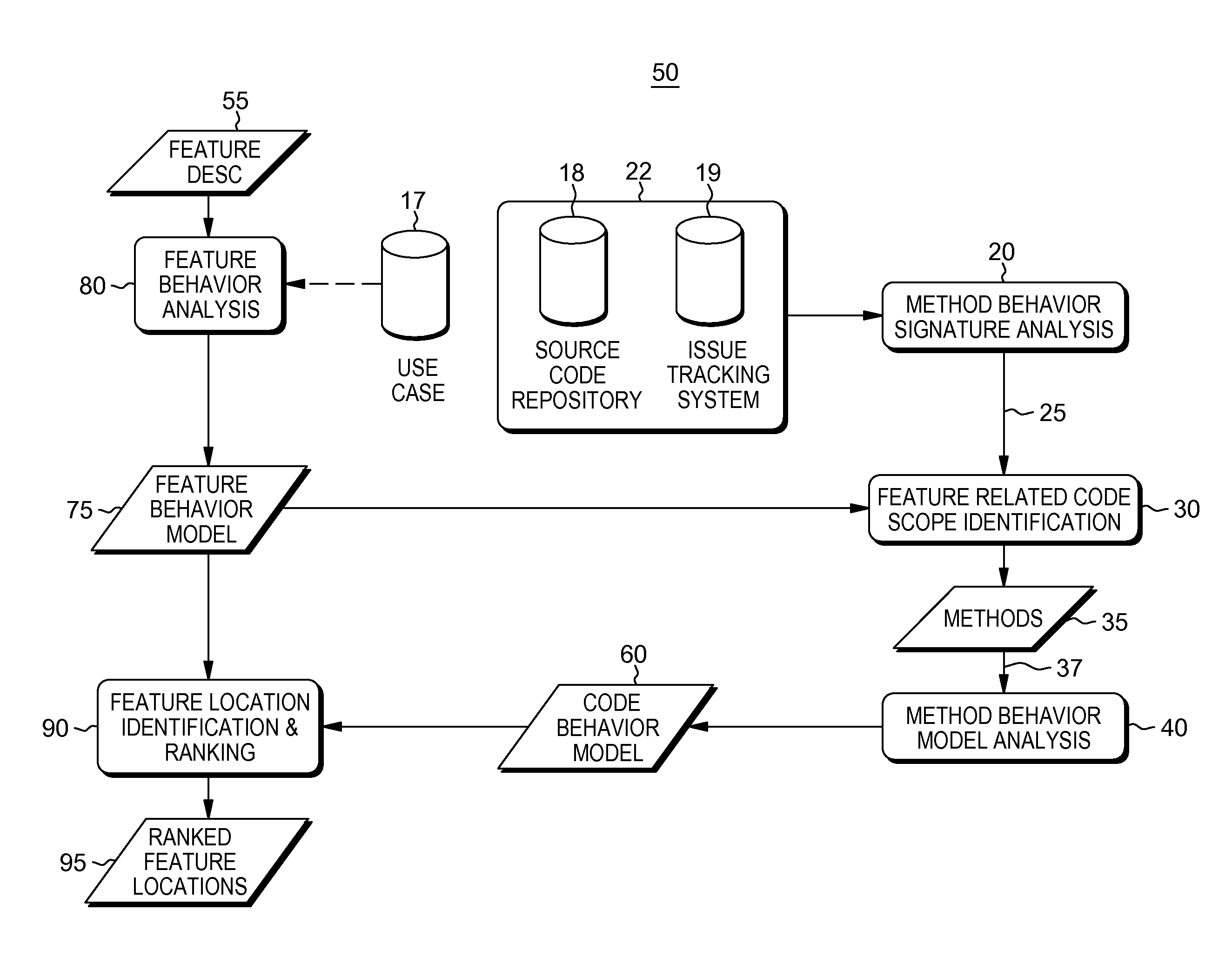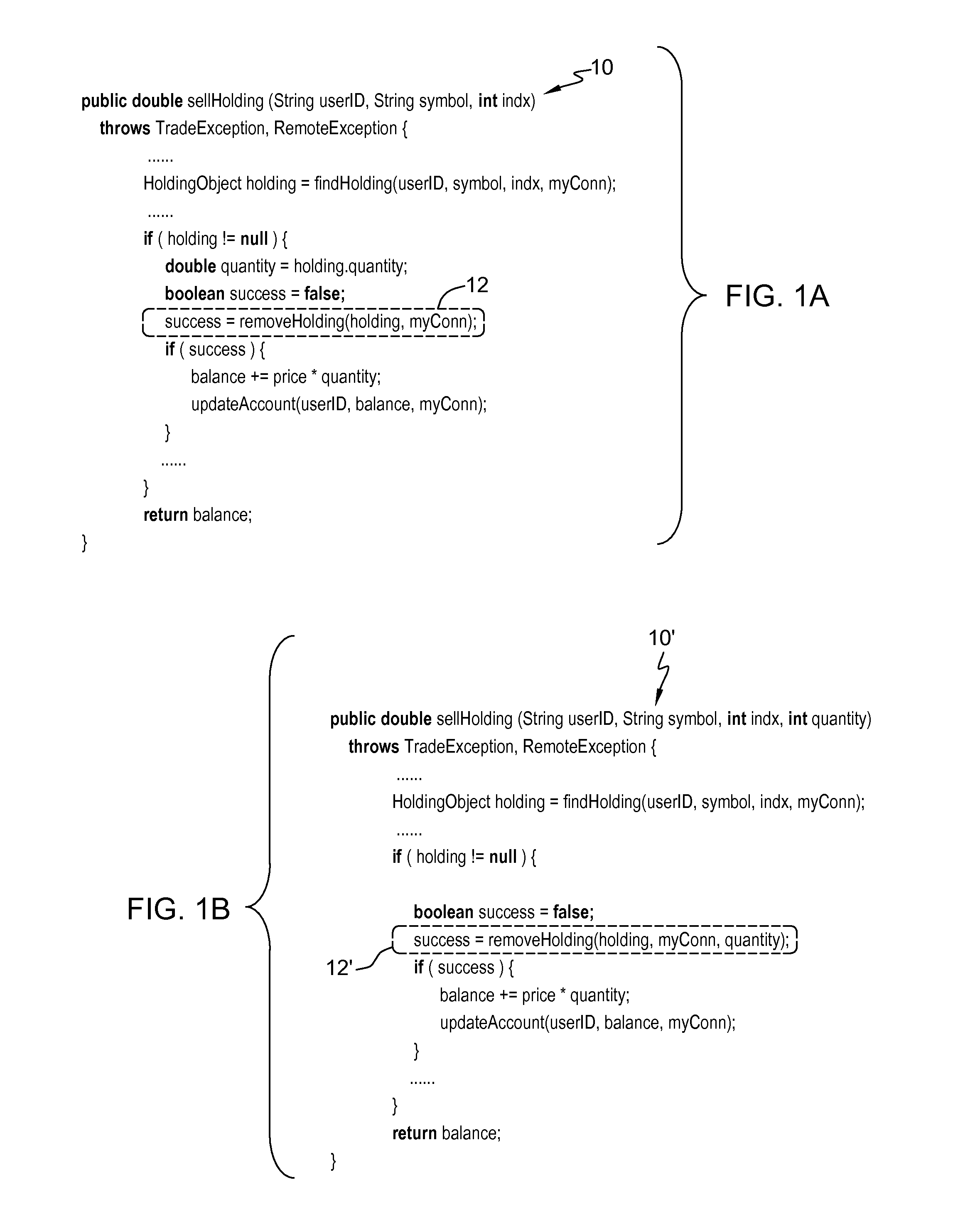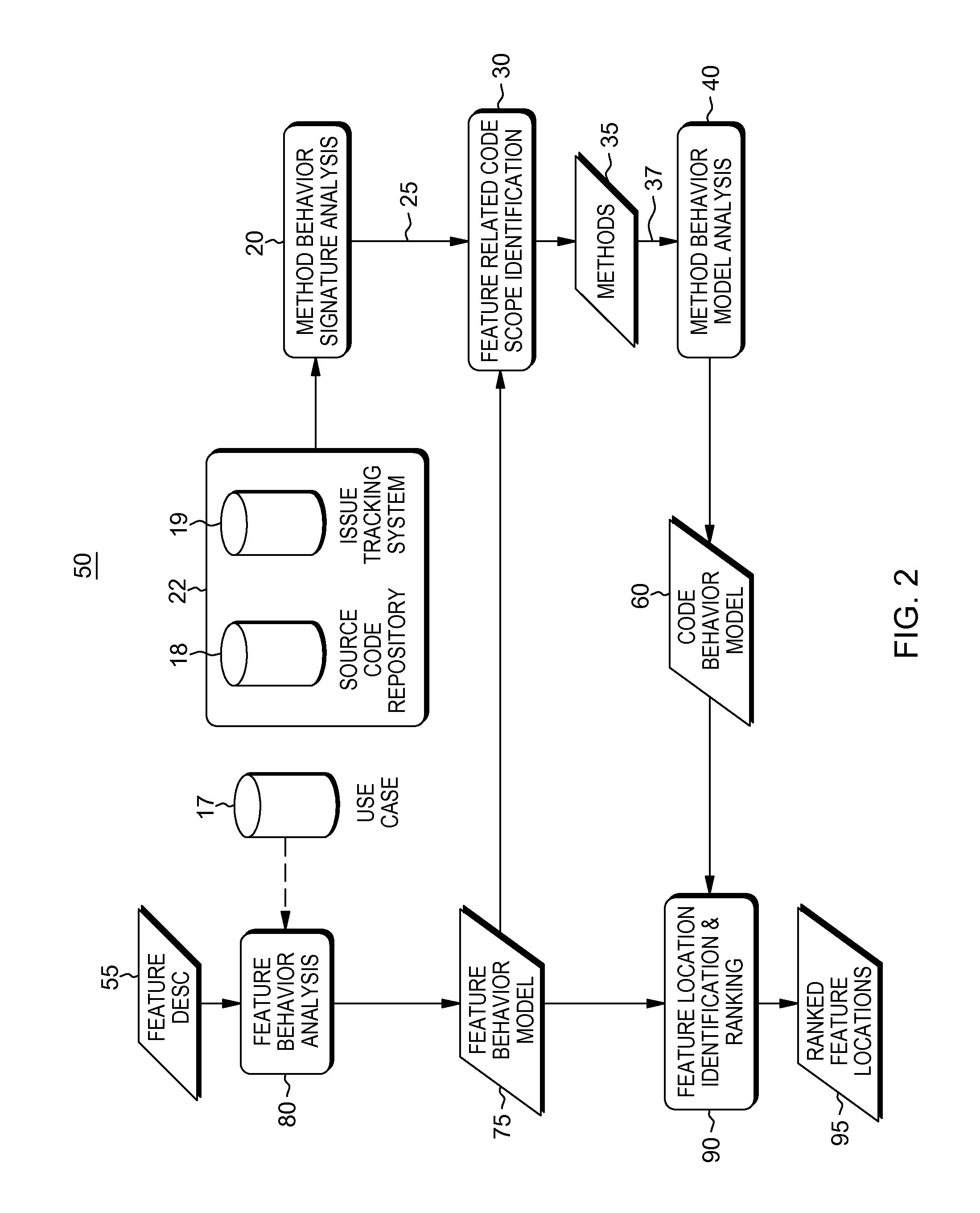Effective feature location in large legacy systems
a feature location and legacy system technology, applied in software design, reverse engineering, requirement analysis, etc., can solve the problems of difficulty in identifying/locating the initial location in source code that corresponds to a specific functionality/feature precision loss or recall loss, etc., to achieve effective identifying feature locations and high precision and recall
- Summary
- Abstract
- Description
- Claims
- Application Information
AI Technical Summary
Benefits of technology
Problems solved by technology
Method used
Image
Examples
Embodiment Construction
[0029]The present disclosure relates to feature location in software code of large legacy systems. Typically such “legacy” systems include computer systems applications which continue to be used because of the cost of replacing or redesigning it and often despite its poor competitiveness and compatibility with modern equivalents. The implication is that the legacy system code is large, monolithic and difficult to modify. However, it is understood that the systems and methods described herein can be applied for all kinds of existing software systems (e.g., that could include many applications, middleware components, a database system, etc.).
[0030]FIG. 2 illustrates one embodiment of a fine-grained behavior model matching based method and system 50 for effective feature location in large legacy computer systems. The system 50 includes a feature behavior model analyzer 80, for extracting internal behaviors of a feature under querying based on NLP techniques or rules written that specif...
PUM
 Login to View More
Login to View More Abstract
Description
Claims
Application Information
 Login to View More
Login to View More - R&D
- Intellectual Property
- Life Sciences
- Materials
- Tech Scout
- Unparalleled Data Quality
- Higher Quality Content
- 60% Fewer Hallucinations
Browse by: Latest US Patents, China's latest patents, Technical Efficacy Thesaurus, Application Domain, Technology Topic, Popular Technical Reports.
© 2025 PatSnap. All rights reserved.Legal|Privacy policy|Modern Slavery Act Transparency Statement|Sitemap|About US| Contact US: help@patsnap.com



